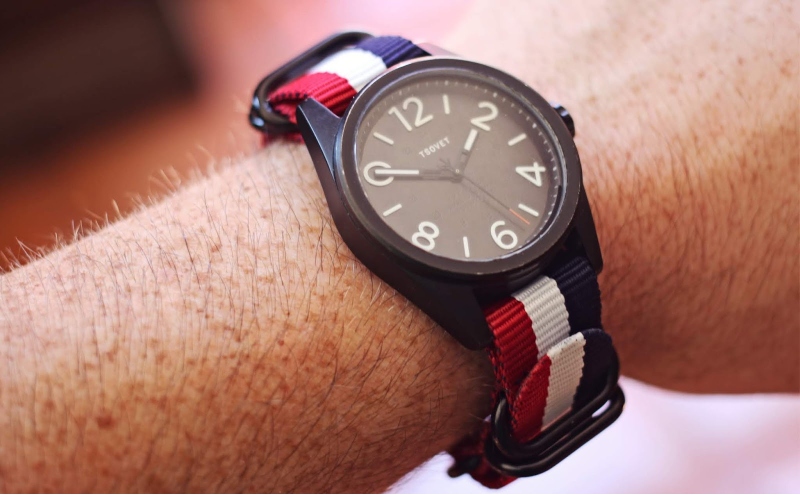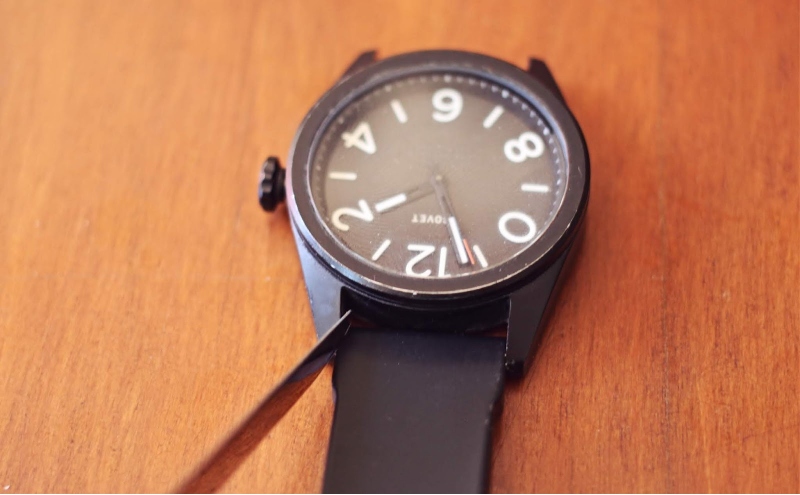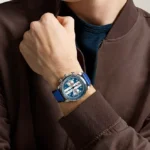As a great way to refresh a watch you have had in your collection for a while is to install a NATO Strap. My TSOVET JPT-NT42 has been around the world with me twice, it has scuffs, scratches, and now after years of adventure, the original rubber watchband was worn out and cracking. I contemplated contacting Dave from
TSOVET to get an original style band and I also looked at some really cool leather ones, but since spring is just around the corner I thought it was time to go with a cool and very American-themed NATO strap.
Now NATO straps have been around since 1973 when the British Ministry of Defence first introduced Stocking Number 66-15 “Strap, Wrist Watch,” which required form G1098 to requisition one from the quartermaster, which is how the strap got the nickname G10. The original military-issued G10 straps were made of “Admiralty Grey” nylon, 20mm wide, and had chrome-plated buckle and keepers. The original design, and what makes it a true NATO strap, incorporates an extra section of nylon strap that acts as a keeper to prevent the watch from sliding freely on the strap. Since NATO countries share a lot of equipment, the term NATO strap has been adopted as the most widely known name.
Most NATO straps offered today come in a solid color with a stripe or stripes, this wasn’t a fashion statement, the color combinations also are rooted in military history. Not long after the G10 was released regiments began ordering straps with their regimental colors. Today the fashion market has taken the concept and created thousands of color combinations allowing you to add a custom look to your watch for just a few dollars.
Install A NATO Strap
The strap I am using today was purchased on
eBay for just $6 including shipping. You can find a large selection on
Amazon, or even at your local watch shop. Just be sure to know the measurements you need, the
JPT-NT42 requires a 22mm wide strap. Most watches use straps between 18mm-24mm wide, I verified my watch’s strap size on the manufacturer’s website.
If you have ever wanted to swap out your watch band it is much easier than you might have thought and doesn’t require a trip down to the watch shop.
After years of abuse the original strap on my JPT-NT42 was toast, it had seen a lot from the jungles of eastern Nicaragua to crossing the United States on a motorcycle and everything in between. It was time to replace it.
Install A NATO Strap
They do sell specialty tools on Amazon and eBay you can buy to depress the spring-loaded bars that hold the bran in place. However, a thin pen-knife should do the trick, simply slide it between the lug and the strap, and once in contact with the bar, slide the bar inward to depress the pin.
Some watch bars have a built-in handle on them to allow you to quickly change your band without any tools at all. You can see the two styles of pins in the photo above. On bars with these little handles, you simply depress the pin and remove the watchband.
Here you can see each style of the bar as it would be installed if it were retaining a watch band. This is how your watch should look when you are planning to thread the NATO strap onto the watch.
Install a NATO strap by starting from the lower lug, passing the strap through the space between the bar and the watch’s body, looping it under the watch, and threading it through the upper lug.
Your watch should look like this face-down after threading the strap through the lugs.
Take the long end of the strap, thread it through both eyelets on the keeper strap, and pull through until snug. Once you install a NATO strap once it becomes second nature.
Your watch should look like this face down with the keeper strap snugly positioned against the lug.
With a range of colors, you can purchase several straps and swap them out for different occasions and looks without investing in several watches.
Post Views: 8,749



























